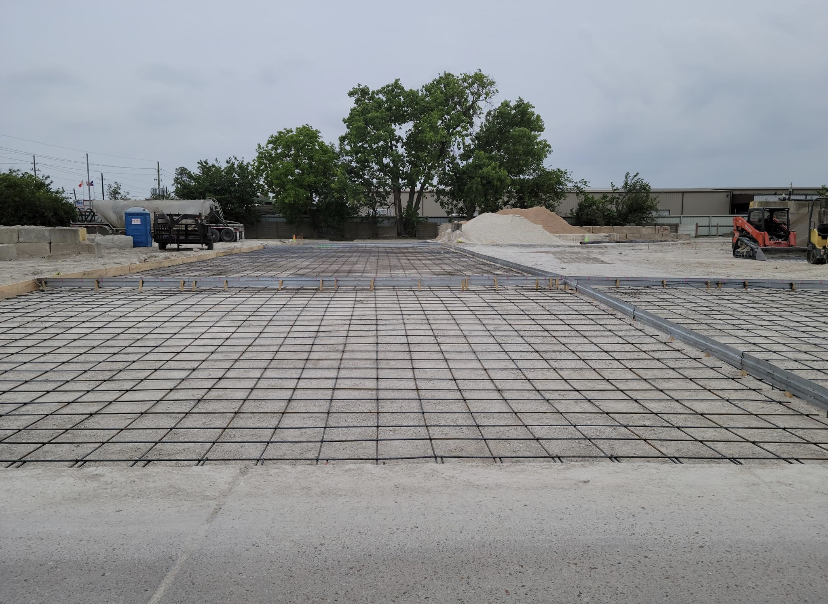Quality and Expertise: Legendary Concrete Brentwood Establishes the Requirement
Quality and Expertise: Legendary Concrete Brentwood Establishes the Requirement
Blog Article
The Environment-friendly Option: Concrete Sidewalks for Your Neighborhood
Concrete walkways are an ubiquitous feature in most areas, yet their influence on the atmosphere is typically neglected. Selecting concrete for your neighborhood sidewalks can make a substantial difference in terms of sustainability and eco-friendliness. The advantages of choosing concrete surpass simple appearances and capability. By thinking about the ecological advantages and lasting impacts on the area, the option of materials for pathways ends up being an essential choice. Let's explore why concrete pathways may be the environmentally friendly selection your area requires.
Advantages of Concrete Sidewalks
When taking into consideration the installation of walkways in a community, the benefits of choosing concrete over other materials are numerous and significant. Concrete sidewalks offer longevity, enduring heavy foot traffic, climate variations, and ecological aspects better than different materials like asphalt or crushed rock.

Durability and Durability
Just how can concrete walkways surpass various other products in terms of toughness and longevity? Concrete walkways are renowned for their exceptional durability and long life compared to alternate products like asphalt or pavers. The inherent strength of concrete makes it extremely immune to cracking, shifting, and general damage triggered by foot traffic, weather condition variations, and other environmental aspects. Unlike asphalt, which can soften in heats and split in freezing conditions, concrete maintains its structural stability, needing marginal upkeep over time.
Concrete sidewalks also have a longer lifespan than pavers, which are prone to uneven settling, weed growth in between joints, and individual paver movement. The strong, continual surface area of concrete minimizes tripping dangers and makes sure a smooth strolling course for pedestrians. Furthermore, concrete's toughness minimizes the demand for regular fixings or substitutes, making it a sustainable and affordable choice for neighborhood pathways. By spending in concrete walkways, communities can enjoy a reliable and long-lasting infrastructure that enhances the total visual charm and functionality of the location.
Low Upkeep Requirements
Concrete pathways stand apart for their minimal upkeep requirements as a result of their resilient nature and durable performance. Unlike alternative products that might need constant repair work or substitutes, concrete walkways supply a cost-efficient service that requires little upkeep gradually. Among the essential benefits of concrete sidewalks is their resistance to weathering and erosion. This suggests they can endure harsh climate condition, hefty foot website traffic, and other ecological variables without deteriorating promptly.
Regular upkeep for concrete walkways normally entails easy tasks such as regular cleansing to eliminate particles and occasional sealing to secure the surface area. In comparison to materials like asphalt or pavers that might change, crack, or degrade more conveniently, concrete pathways maintain their structural integrity with marginal intervention. In addition, any kind of repair work that might be required are generally localized and can be addressed quickly, minimizing both the moment and expense related to upkeep.

Ecological Advantages
With a concentrate on sustainability and eco-friendliness, concrete walkways use significant ecological benefits that add to a greener neighborhood facilities. Concrete is a product understood for its resilience and longevity, lowering the demand for regular replacements. This long visit the site life lessens the environmental influence connected with the production and transport of brand-new materials click this for walkway building and construction. Additionally, concrete sidewalks have a high solar reflectance index, suggesting they mirror a considerable amount of sunshine instead of keeping and soaking up warmth. This high quality aids mitigate the urban warmth island result, minimizing energy intake for cooling down buildings and enhancing total convenience in metropolitan areas.
In addition, concrete is a porous material that permits water to infiltrate into the ground, minimizing stormwater overflow and aiding in groundwater recharge. This aids avoid erosion, minimize flooding, and preserve the all-natural balance of water supply in the neighborhood. By choosing concrete sidewalks, areas can make a lasting selection that positively affects the environment and enhances the quality of life for homeowners.
Enhancing Area Sustainability
By prioritizing lasting infrastructure solutions, communities can grow a harmonious balance between ecological awareness and community growth. Enhancing area sustainability includes a complex method that surpasses simply the ecological advantages of concrete pathways. Carrying out green spaces, promoting energy-efficient methods, and cultivating a sense of community involvement are vital parts of developing a sustainable community.
One method to improve area sustainability is with the integration of permeable concrete sidewalks. These pathways permit rain to leak into the ground, decreasing stormwater overflow and minimizing the pressure on metropolitan drainage systems. Legendary Concrete Brentwood. By incorporating permeable walkways, neighborhoods can enhance water quality, lower flooding threats, and enhance total ecological resilience
Moreover, promoting alternative transportation techniques such as walking and cycling can significantly minimize carbon exhausts and promote a much healthier lifestyle amongst citizens. Creating secure pedestrian pathways, bike lanes, and designated greenways can urge locals to depend less on cars, additionally adding to the community's sustainability goals.
Verdict
In verdict, concrete sidewalks offer various benefits for areas, consisting of sturdiness, reduced maintenance needs, and ecological benefits. By choosing concrete walkways, neighborhoods can enhance their sustainability and add to a much more eco-friendly environment. It is clear helpful resources that concrete pathways are the optimal choice for communities wanting to boost their framework in a durable and eco-friendly manner.
When considering the installation of pathways in an area, the advantages of choosing concrete over other materials are substantial and countless. Furthermore, concrete's durability lowers the need for regular repairs or substitutes, making it a lasting and cost-efficient option for neighborhood walkways (Concrete Companies Near Me).With a focus on sustainability and eco-friendliness, concrete pathways provide significant environmental advantages that add to a greener neighborhood framework. Enhancing community sustainability involves a diverse method that goes past simply the environmental advantages of concrete pathways.In conclusion, concrete sidewalks supply numerous advantages for neighborhoods, including longevity, low maintenance demands, and ecological advantages
Report this page